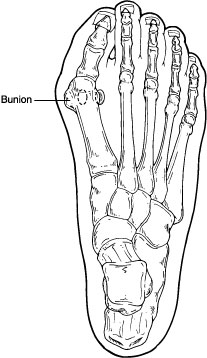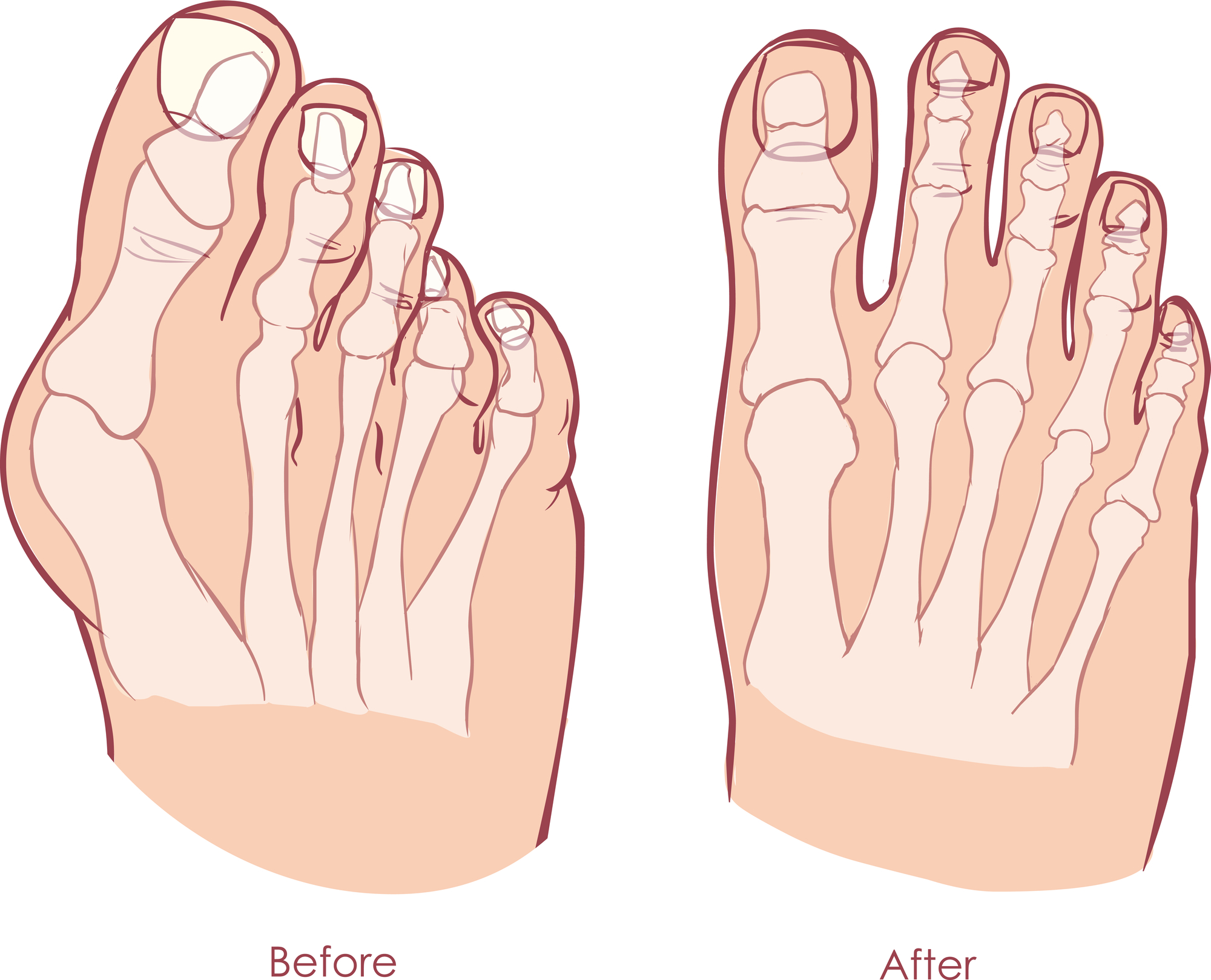Bunions Foot Care
Bunions are often described as a bump on the side of the big toe, but a bunion is much more than that.
What are Bunions?
Bunions are often described as a bump on the side of the big toe. But a bunion is more than that. The visible bump actually reflects changes in the bony structure between the first and second metatarsals. There is a widening of the angle between these two bones. With a bunion, the big toe also leans toward the second toe for it has subluxed off the big toe joint. The first metatarsal head is now protruding, producing the bunion’s “bump.”
How to Know if You Have a Bunion
Bunions are a progressive disorder; symptoms occur most often when wearing shoes that crowd the toes.

The First Stages of a Bunion Forming
They begin with a leaning of the big toe, gradually changing the angle of the bones over the years and slowly producing the characteristic bump, which continues to become increasingly prominent. Usually, the symptoms of bunions appear at later stages, although some people never have symptoms. Symptoms occur most often when wearing shoes that crowd the toes—shoes with a tight toe box or high heels. This may explain why women are more likely to have symptoms than men. In addition, spending long periods of time on your feet can aggravate the symptoms of bunions.
What is the True Cause of a Bunion?
Bunions are most often caused by an inherited faulty mechanical structure of the foot. It is not the bunion itself that is inherited, but certain foot types that make a person prone to developing a bunion, i.e. flat feet. Although wearing shoes that crowd the toes won’t actually cause bunions in the first place, it sometimes makes the deformity get progressively worse faster.
Take these symptoms seriously and see a podiatrist right away. The faster you seek treatment for your bunions, the better your prognosis will be.
Your Podiatrist is Your Partner in Treating Your Bunions
A periodic office evaluation and x-ray examination can monitor the bunion deformity over time, thereby reducing your chance of irreversible damage to the joint. In many other cases, however, some type of treatment is needed. Early conservative treatments are aimed at easing the pain of bunions, but they won’t reverse the deformity itself.
Treatment Options for Bunions
HOW DO YOU TREAT BUNIONS?
When the pain of a bunion interferes with daily activities, it’s time to discuss surgical options with your foot and ankle surgeon. Together you can decide if surgery is best for you. Recent advances in surgical techniques have led to a very high success rate in treating bunions.

Surgical Treatment Options for Bunions
CAN YOU SURGICALLY REMOVE BUNIONS?
A variety of surgical procedures are performed to treat bunions. The procedures are designed to remove the “bump” of bone, correct the changes in the bony structure of the foot, as well as correct soft tissue changes that may also have occurred. The goal of these corrections is the elimination of pain. The length of the recovery period will vary, depending on the procedure or procedures performed. Most of the procedures nowadays allow the patient to walk right away post-operatively. Of course, sedentary activity level is necessary to allow the bone to heal properly.
3 Convenient Locations
Reisterstown
Address:
4 Glyndon Drive, Suite 2A
Reisterstown, MD 21136
Towson
Address:
7600 Osler Drive, Suite 105
Towson, MD 21204
Baltimore- Rotunda
Address:
711 W. 40th Street, Suite 351
Baltimore, 21211
Contact the Family Podiatry of Maryland Team
Interested in booking at one of our three convenient locations? Feel free to send us a message so we can reach out to you as soon as possible! We're here to help with all your foot and ankle needs.
